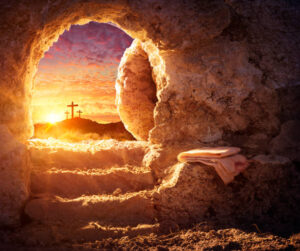Mar
31
What You Might Not Know About Easter
Due to a mild case of procrastination, exacerbated by multiple distractions of varying importance, I almost didn’t get a blogpost prepared for this week.

First, I wasn’t sure whether or not I wanted to do something Easter-related this year. I did have a potential source article to draw from regarding pagan origins. But, once I decided to move forward with an Easter theme and finally got around to looking at the article and double-checked my previous Easter posts, I realized that I had already done one very similar to what I had in mind. So, I cheated… sort of.
Around the time I discovered that I needed a backup plan, I had received an email with links to several Easter-oriented articles. One of them appears below. I also searched the sites of a couple of my favorite Christian organizations and came up with a couple more relevant articles that I particularly liked. Thus, I present the following three, Easter-themed articles for your education and edification.
The first two are rather brief, so they won’t take long to read. The third one is longer, but with larger type and a few relevant photos/illustrations. If your interest has more to do with apologetics or simply with understanding the Bible (especially “Easter”) in its historical/cultural context, I think you will enjoy these articles. (A sample quote follows each link.)
“What Is Maundy Thursday?” by Nick Batzig
“The word Maundy comes from the Latin word mandatum, which, in English, simply means ‘mandate.’ In the upper room (John 13–17), Jesus gave His disciples the new commandment (i.e., the new mandate) after washing their feet. This new commandment is found in John 13:31–35. Having set an example by washing their feet, the Lord Jesus told the Twelve: ‘A new commandment I give to you, that you love one another: just as I have loved you, you also are to love one another. By this all people will know that you are my disciples, if you have love for one another’ (John 13:35). It has not been uncommon for believers to misunderstand the symbolism of the foot washing….”
“Five Misconceptions about Holy Week” by Amy Hall
Note, this is itself a summary of a longer article by Andreas Köstenberger and Justin Taylor, but points 2 thru 5 of the original are reserved for members at Christianity Today.
“1. Don’t say Jesus died when he was 33 years old: ‘Jesus would have been 37 or 38 years old when he died in the spring of A.D. 33.’
2. Don’t explain the apparent absence of a lamb at the Last Supper by only saying Jesus is the ultimate Passover Lamb: ‘Even if it isn’t specifically mentioned in the Gospel accounts, eating the paschal lamb was an important part of every Jewish Passover.'”
“Do Archaeology and Astronomy Support the Historical Crucifixion of Jesus?” by Zachary Leung
“Despite growing up in Christian schools, I had assumed for decades that the Easter celebration was only about bunnies and eggs, and yes, the long spring break. Oddly, I was not able to associate Easter with the biblical story. And I had thought that the crucifixion and resurrection were just another fictional story. However, nothing proved more rewarding than doing my own research. This article explores archaeological, historical, and astronomical sources outside of the Bible relating to the crucifixion of Jesus. I hope you’ll see, as I did, an astounding agreement between the biblical and extrabiblical sources.”
Have a joyous Resurrection Day!
P.S. For more blogposts about Easter and other holidays, check out this page.















